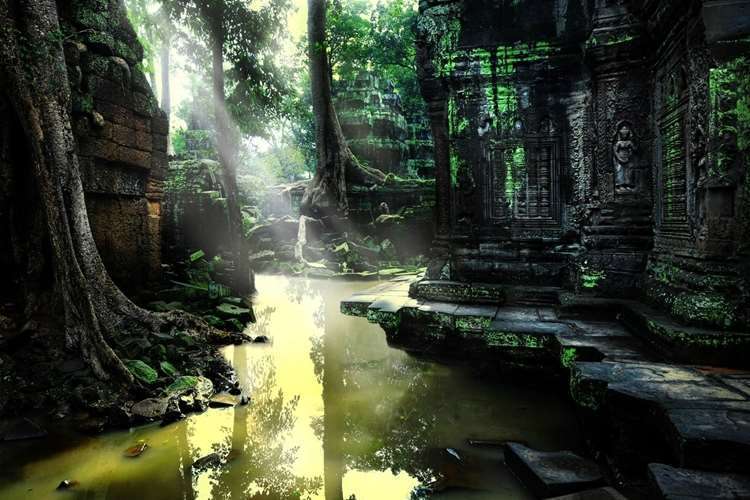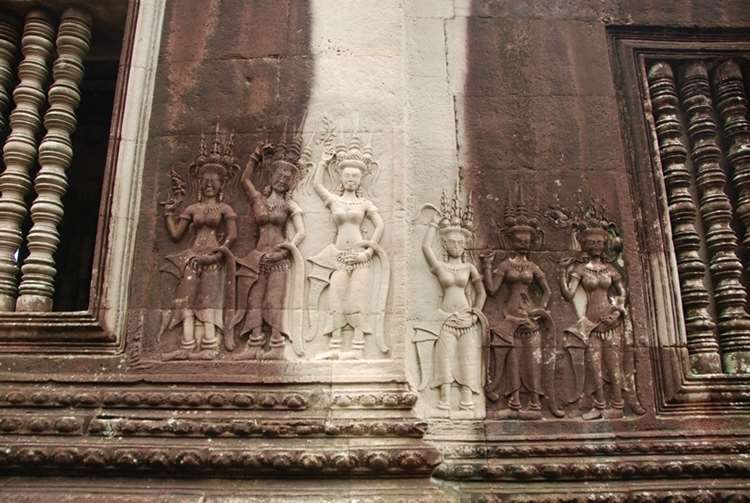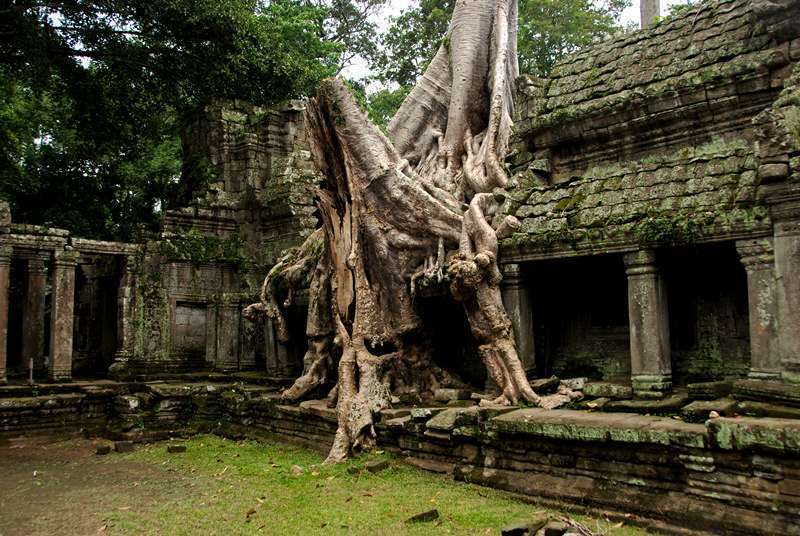Angkor Wat, Angkor Thom, Phnom Bok, Banteay Srei, Phnom Krom, Chau Srei Vibol, Roluos Temples, Beng Mealea, Phnom Kulen, Koh Ker, and Kbal Spean are the main temples and sites that make up the world’s largest religious temple complex located in Siem Reap, in the northern region of Cambodia. Angkor Wat is the general name given to this complex, which includes hundreds of temples of various sizes.

The Khmer Empire, known as the most powerful empire in Southeast Asia, was founded in 802 AD when Jayavarman II declared himself ruler and the “God-King” during the Angkor period. The Khmer Empire reigned from 802 to 1432 AD.
During this period, the greatest rulers were as follows:
Jayavarman II: The founder of the Khmer Empire. Indravarman I: The first builder of reservoirs, Preah Ko, and Bakong. Yasovarman I: Transferred the capital to Angkor and established Lolei and Phnom Bakheng. Jayavarman IV: Usurped the kingdom and moved the capital to Koh Ker. Rajendravarman II: The founder of East Mebon, Phimeanakas, and Pre Rup. Jayavarman V Suryavarman I: Expanded the empire to many parts of Laos and Thailand. Udayadityavarman II: The founder of the pyramid-shaped Baphuon and West Mebon. Suryavarman II: The founder of Angkor Wat and Beng Mealea. Jayavarman VII: The founder of Angkor Thom, Ta Prohm, and Preah Khan.
Angkor Thom is undoubtedly the most significant and visually striking Khmer temple within the vast archaeological complex, which is also one of the most important and extensive in Southeast Asia. It has been listed as a UNESCO World Heritage Site.
Angkor Wat was restored by the Khmer Empire in the 14th century to be used as a Buddhist temple.
The myths, symbols, signs, and thousands of carvings in the Angkor temples are intricately carved. While deciphering many of these carvings is impossible, here are the meanings of some frequently prominent carvings:
The meanings of some symbols and signs found in the temple complexes are as follows:

- Apsara: A celestial nymph or dancer in Hindu and Buddhist mythology.
- Asuras: Evil spirits
- Devata: A female deity or goddess.
- Garuda: A mythical bird-like creature and mount of Lord Vishnu.
- Kala: “guardians” or “protectors” of the temple, entrusted by the god Shiva.
- Naga: A mythical serpent or snake deity associated with water and fertility.
- Dvarapala: Guardian figures often depicted as fierce warriors protecting temple entrances.
- Lingam and Yoni: Symbolic representations of the Hindu god Shiva and the female creative energy.
- Lotus: A sacred flower symbolizing purity and enlightenment in Buddhism and Hinduism.
- Makara: A mythological sea creature often depicted as a crocodile-like creature with a trunk.
- Rishi: “sage” or “wise man,” symbolizing a person of great wisdom and knowledge.
- Gajalakshmi: The goddess of wealth and prosperity, often depicted with elephants.
- Churning of the Ocean: A mythological scene depicting the stirring of the cosmic ocean to obtain the elixir of immortality.
- Yoni: “vulva” or “female reproductive organ.” It is the complement to the “linga” symbol, which represents the phallus or male reproductive organ. Together, they symbolize the union of male and female energies or the cosmic duality of creation.

These are just a few examples of the symbols and signs found in the temples, each with its own unique meaning and significance in Khmer mythology and religious beliefs.
We recommend visiting the following places within the Angkor Wat temple complex, which was the last capital of the Khmer Empire:
- Angkor Thom: The ancient capital city featuring the Bayon temple with its famous smiling faces.
- Preah Khan: Dedicated to Buddha and the Hindu gods Brahma, Vishnu, and Shiva.
- Neak Poan: A temple with a tower rising above a lake.
- Ta Prohm: Known as the “Tomb Raider” temple, featured in the movie, with intertwined trees and ruins.
- Sra Srang: The royal bathing pool and a great spot for sunset viewing.
- Bayon Temple: Famous for its multiple serene faces.
- Terrace of the Elephants: Decorated with life-sized elephant sculptures.
- Banteay Srei: Adorned with delicate carvings.
- And more.
To fully explore the Angkor Wat temple complex, which was inscribed as a UNESCO World Heritage Site in 1992, we recommend dedicating at least three days for your visit.
Angkor Wat entrance tickets are available for 1 day ($37), 3 days ($62), and 7 days ($72).
